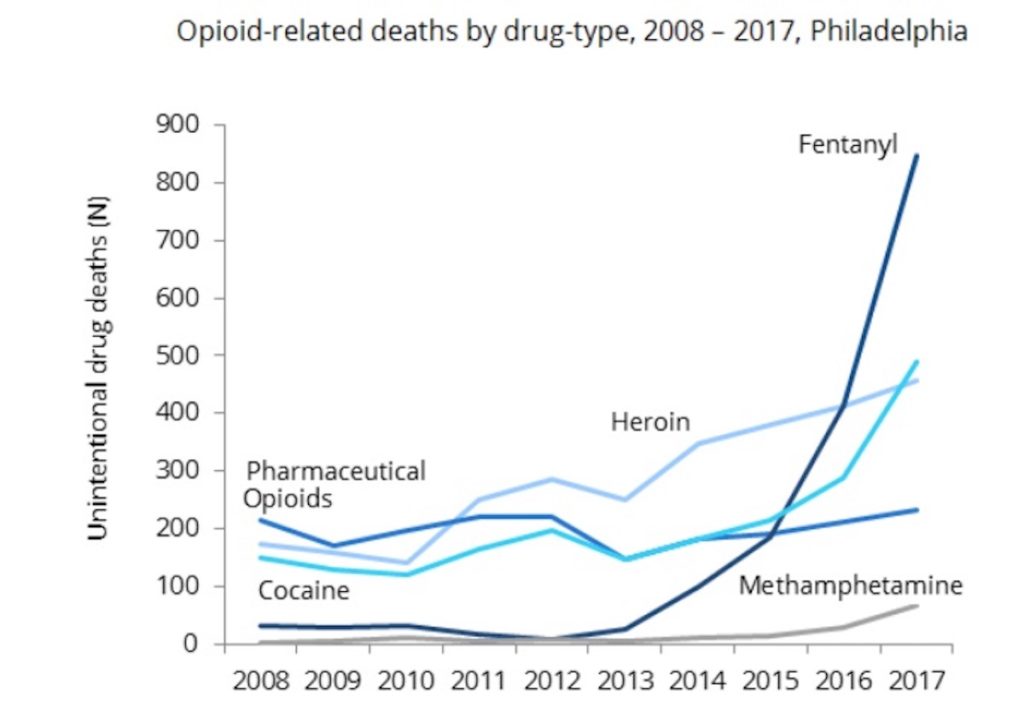Philly racked up over 1,200 fatal drug overdoses in 2017
 April 25, 2018
Category: Featured, Results, Short
April 25, 2018
Category: Featured, Results, Short
The Philadelphia Department of Public Health released its latest report on fatal drug overdoses yesterday afternoon, revealing that the city saw 1,217 unintentional drug overdoses in 2017.
That’s 34 percent more than were recorded in 2016, a year in which Philadelphia’s nearly 900 overdose-related deaths was four times the number of deaths by homicide. Across the U.S., fatal drug overdoses killed nearly 64,000 people in the same year.
According to this latest report, the synthetic opioid fentanyl is, by far, the most deadly drug involved in drug overdoses, linked to 846 of the 1,217 fatalities.
Read the reportA few key points:
- Although all corners of the city were fair ground for overdose deaths, new hotspots include West Philadelphia, Northeast Philadelphia and South Philadelphia.
- The largest demographic surges in opioid-related overdose deaths include a 60 percent increase in deaths among men, and a 65 percent increase in deaths among people ages 35 to 44.
- Seventy-five percent of all opioid-related deaths took place in a personal residence.
“We are experiencing a tragedy far surpassing the AIDS epidemic at its worst,” said Dr. Thomas Farley, commissioner of the Department of Public Health and co-chair of the Mayor’s Task Force to Combat the Opioid Epidemic in Philadelphia, in a press release. “This crisis has happened because of decades of over-prescribing of opioids, combined today with the delivery to Philadelphia’s streets of cheap, pure heroin and fentanyl.”
A quarterly report published in March of 2018 shows that 17 of the 18 recommendations to combat the opioid crisis presented by the task force, which was established in 2016 by the Kenney administration, are being implemented in some form, including a consumer-directed media campaign about opioid risks and an increase of medication-assisted treatment (MAT).
The one recommendation still strictly in the planning phase? To incentivize MAT providers to enhance the quality of substance use disorder screening, treatment and workforce.
“We must turn this crisis around by getting physicians to prescribe opioids less, helping people who are addicted to opioids get treatment, and using the antidote naloxone to prevent fatal overdoses,” Farley said.
Trending News










